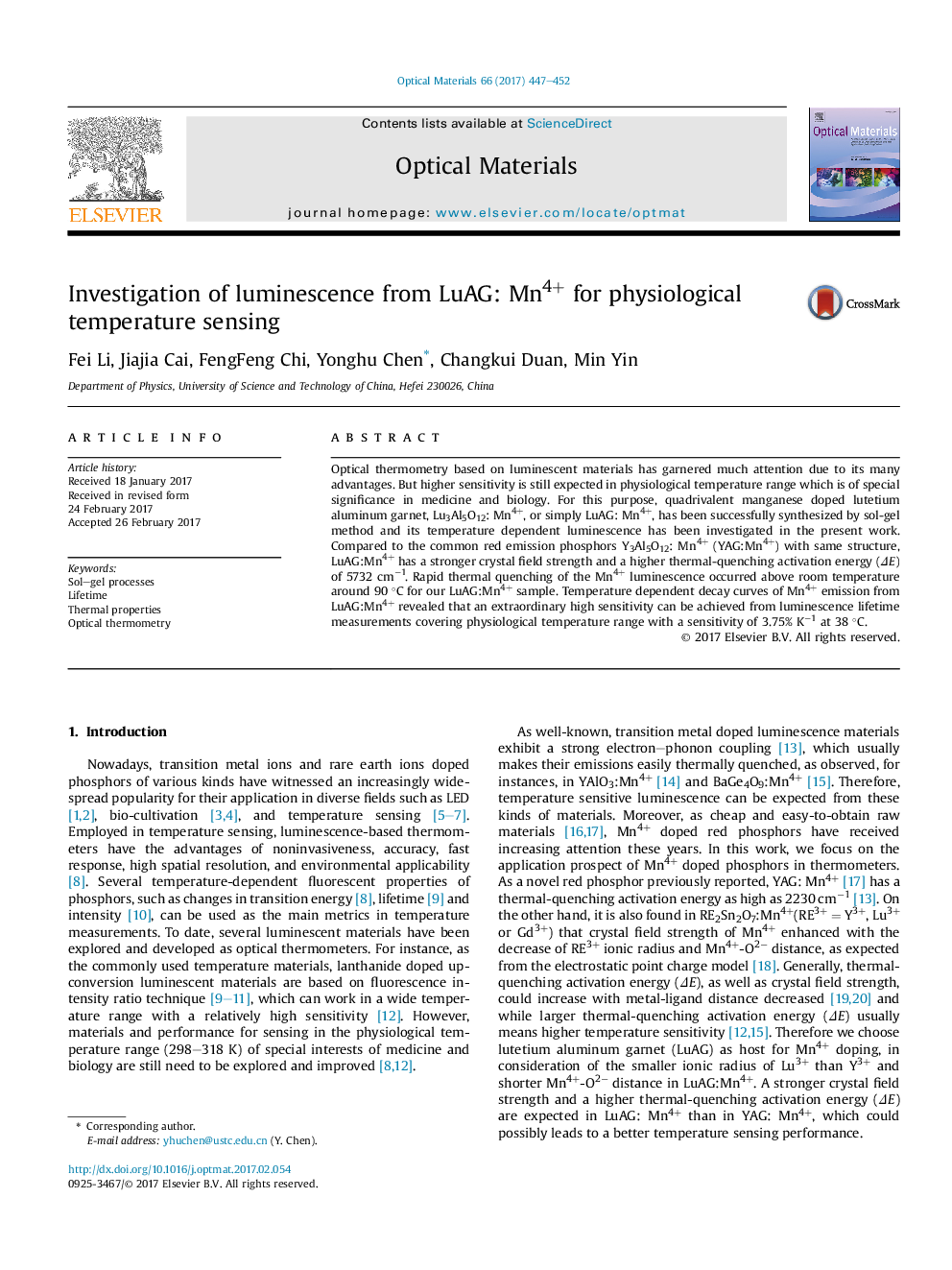| Article ID | Journal | Published Year | Pages | File Type |
|---|---|---|---|---|
| 5442845 | Optical Materials | 2017 | 6 Pages |
Abstract
Optical thermometry based on luminescent materials has garnered much attention due to its many advantages. But higher sensitivity is still expected in physiological temperature range which is of special significance in medicine and biology. For this purpose, quadrivalent manganese doped lutetium aluminum garnet, Lu3Al5O12: Mn4+, or simply LuAG: Mn4+, has been successfully synthesized by sol-gel method and its temperature dependent luminescence has been investigated in the present work. Compared to the common red emission phosphors Y3Al5O12: Mn4+ (YAG:Mn4+) with same structure, LuAG:Mn4+ has a stronger crystal field strength and a higher thermal-quenching activation energy (ÎE) of 5732 cmâ1. Rapid thermal quenching of the Mn4+ luminescence occurred above room temperature around 90 °C for our LuAG:Mn4+ sample. Temperature dependent decay curves of Mn4+ emission from LuAG:Mn4+ revealed that an extraordinary high sensitivity can be achieved from luminescence lifetime measurements covering physiological temperature range with a sensitivity of 3.75% Kâ1 at 38 °C.
Related Topics
Physical Sciences and Engineering
Materials Science
Ceramics and Composites
Authors
Fei Li, Jiajia Cai, FengFeng Chi, Yonghu Chen, Changkui Duan, Min Yin,
